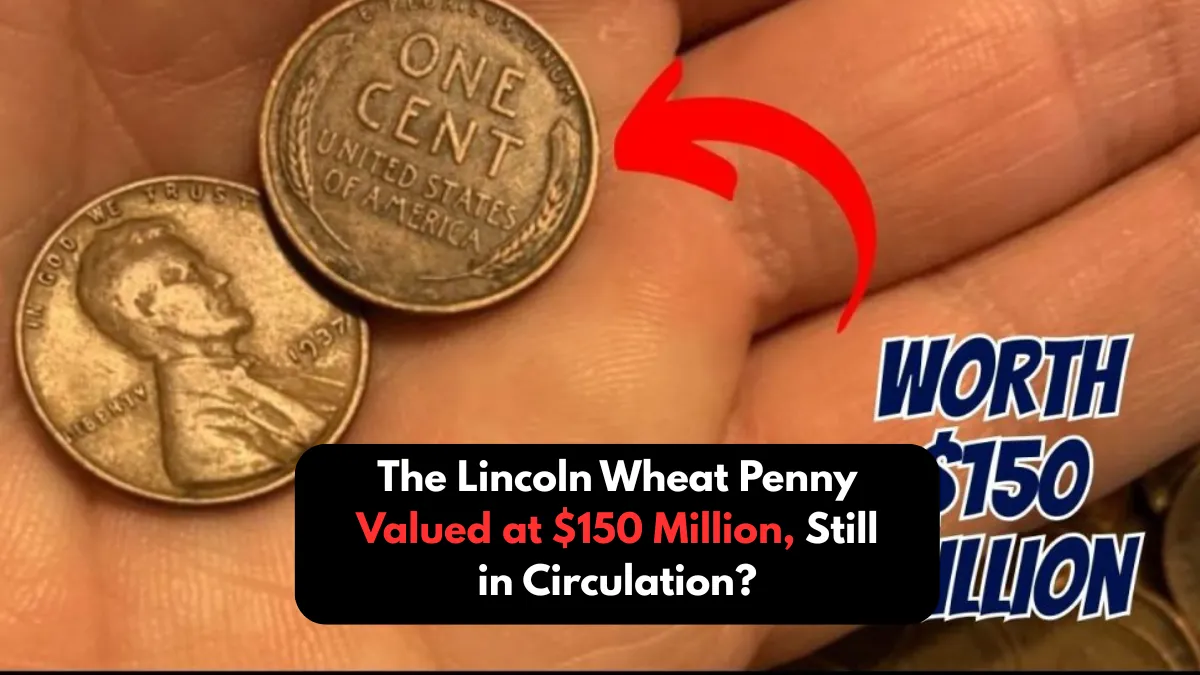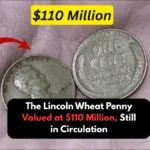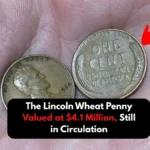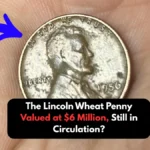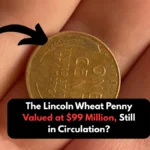The Lincoln Wheat Penny That Could Be Worth $150 Million
Most people hardly give pennies a second thought. They often end up tossed into coin jars, left in drawers, or given away as loose change. However, among these ordinary coins might be a hidden treasure—a Lincoln Wheat Penny that collectors speculate could be valued as high as $150 million. Though that figure is unconfirmed and likely exaggerated, it highlights how rare coins can carry immense worth and may still be found in everyday circulation.
A New Era in U.S. Coin Design
In 1909, the U.S. Mint released the Lincoln Wheat Penny to commemorate the 100th anniversary of Abraham Lincoln’s birth. This marked a major shift in American coin design, moving from symbolic figures such as Lady Liberty to actual historical people.
Victor David Brenner designed the coin with Lincoln’s portrait on the front and two stalks of wheat flanking the words “ONE CENT” on the back. This design remained unchanged until 1958, when the reverse was updated to feature the Lincoln Memorial.
The Mythical $150 Million Penny
Although no Lincoln penny has ever officially sold for $150 million, collectors believe that a coin of extraordinary rarity and condition—perhaps a minting error or a prototype—could be worth that much. One example is the 1943 bronze Lincoln penny.
During World War II, the Mint switched to using steel for pennies to conserve copper for the war effort. However, a small number of bronze blanks were mistakenly used, producing a coin that wasn’t intended to exist. If such a coin is found in flawless condition or with a unique flaw, it could command a jaw-dropping price.
While no penny has fetched $150 million, several Lincoln Wheat Pennies have sold for incredible sums. A 1943 bronze penny sold for more than $1.7 million. The rare 1909-S VDB, notable for the designer’s initials, has reached six figures in high-grade condition. Other prized examples include the 1914-D penny and the 1955 Doubled Die penny, the latter known for its striking double lettering. These sales illustrate that even coins worth just one cent face value can carry immense collectible value.
Why Are These Pennies So Valuable?
There are a few key reasons why certain Lincoln Wheat Pennies can be worth large sums. First is rarity—some of these coins, like the 1943 bronze version, exist in extremely limited numbers. Only about 20 of the 1943 bronze pennies are believed to exist.
Historical context also adds value; coins made during major national events such as World War II or the Great Depression are particularly significant. Errors, such as doubling or off-center strikes, also draw collector interest. Lastly, the coin’s condition plays a huge role—coins that are still shiny and free from damage are far more desirable to collectors than those that are worn or scratched.
How to Spot a Valuable Penny
Because rare Lincoln Wheat Pennies could still be in circulation, it’s smart to check your spare change. A simple test to find a 1943 bronze penny is using a magnet—steel coins will stick, while bronze coins won’t. Look closely at the date and the mint mark beneath it: a blank space indicates Philadelphia, a “D” means Denver, and an “S” stands for San Francisco.
Key dates to watch for include the 1909-S VDB, 1914-D, 1922 with no mint mark, 1931-S, and especially 1943 if made of bronze. Also, inspect for unusual features like doubled letters or off-center printing, as these mistakes can greatly increase a coin’s value.
Where to Search for Hidden Coins
Surprisingly valuable pennies can be found in the most unexpected places. Take time to search through old jars of coins, storage boxes, or inherited collections. Flea markets, estate sales, and even rolls of coins from the bank might contain hidden treasures. While finding a coin worth millions is incredibly rare, collectors do still make new discoveries, proving it’s not impossible. Keeping an open eye and a bit of curiosity can sometimes lead to remarkable finds.
Handling a Rare Find
If you believe you’ve found a valuable Lincoln Wheat Penny, avoid cleaning it. Cleaning can damage the surface and lower its value. Instead, carefully handle the coin by its edges to prevent fingerprints or scratches. Store it in a protective coin holder to keep it safe.
It’s best to send it to a professional grading service like PCGS or NGC. These organizations can confirm whether your coin is genuine, assess its condition, and encase it in a tamper-proof holder with a certified grade. This process boosts the coin’s credibility and makes it easier to sell if you choose to.
More Than Just Money
Beyond their potential financial value, Lincoln Wheat Pennies are meaningful pieces of history. These coins circulated during important periods such as the Great Depression and World War II. For instance, the rare 1943 bronze penny reflects a time when the U.S. adapted its coinage due to war-related resource shortages. Owning such a coin is like holding a fragment of American history—a tangible object that passed through many hands and saw countless lives and events over decades.
The Excitement of the Search
The possibility of a $150 million penny keeps collectors and hobbyists dreaming. Although that specific figure may be a myth, the idea that rare coins are still out there fuels the thrill of the hunt. New discoveries continue to be made, keeping collectors excited and hopeful. Even if your search doesn’t lead to wealth, it offers an engaging, educational experience that deepens your understanding of history and coinage. It’s a hobby that combines fun with the potential for surprising rewards.
Important Note
This article provides educational information about valuable Lincoln Wheat Pennies and their market potential. The $150 million estimate is speculative and not based on any verified sale. Actual coin values depend on many factors including rarity, condition, and buyer interest. It’s important to be cautious, as counterfeit coins—especially fake 1943 bronze pennies—are widespread. Always use a reputable grading service to authenticate coins before making any purchasing or selling decisions.
